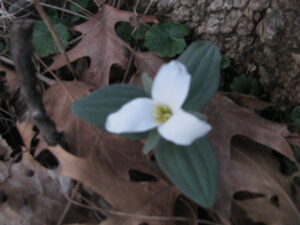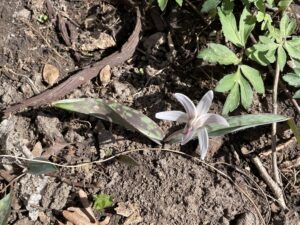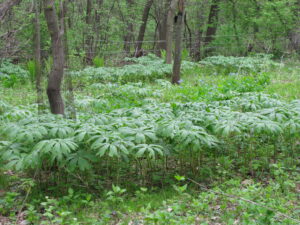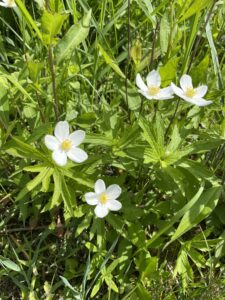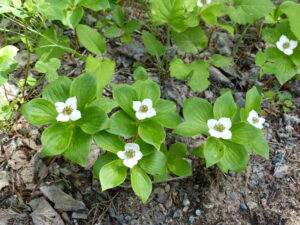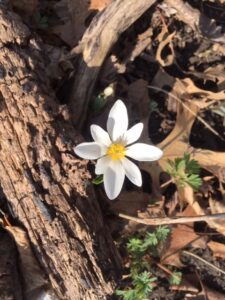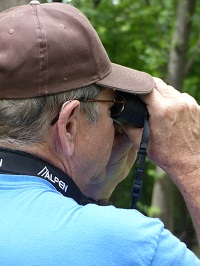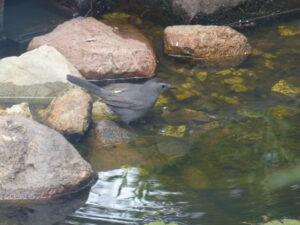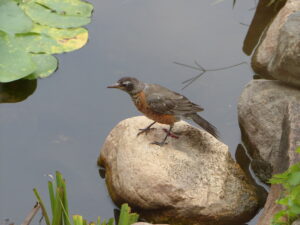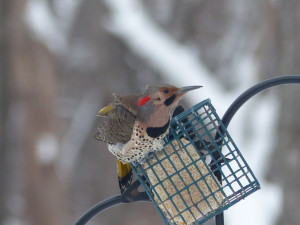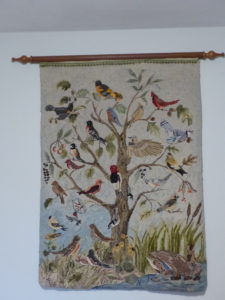A woodland stroll is outstanding in any season but is best during May’s first ten days. We always marvel at nature’s fleeting changes that happen swiftly.
Why Early May
Late April and early May are when ephemeral flowers revel in their time in the sun. That long word “ephemeral” means a short time. There’s a brief time in late April through about mid-May when the air and soil are warm but trees haven’t yet leafed out. So, sunlight streams through still naked branches to reach the ground.
Bloodroot, trout lily, anemone, Dutchman’s breeches, ginger, trillium, and May apples, among many of the woodland flowers, take advantage of this window of sunshine. They grow amazingly fast, bloom for a short time, and then seem to disappear for the rest of the year. They are there but hard to see and not in bloom during summer’s heat and winter’s chill.
- An early bloomer
- Trout Lily can form carpets in dappled shade.
- Mayapples carpet the forest floor.
- A sunny center surrounded by white petals.
- Bunchberry forms a lush, carpet on moist soils.
- When broken, the stem oozes a reddish sap.
Other Delights
Enjoying wildflowers is only one of early May’s woodland delights. Another is birds.
Many of them are, like wildflowers, ephemeral but in a different way. They are migrants en route from points way south to breeding areas up north. For only a few days, often in early May, they linger to feed, rest, and sing before continuing their journey.
We always look forward to seeing migrating birds on their way north and others that come north to nest near our home. Flowers are easy to find. They can’t hide. Birds can, and often many fascinating birds are hard to spot but easy to hear as they sing in what seems like springtime joy.
- Bird watching is again a joy with hearing aids.
- A catbird drinks by a pool.
- Keeping a wary eye, the robin cautiously gets a drink.
- Hummingbirds zoom up, down, and sideways all summer. Then, head south.
- Winter is tough on birds so keep your feeders full.
- A hooked rug by Yvonne Fellows
Modern Technology Helps
Identifying flower and bird species is a fun activity that modern technology has made relatively simple. We use phone apps to help identify plants and birds. Many are free.
Plants: SEEK is amazing. SEEK is part of an electronic world called iNaturalist. It works for many domestic plants as well as wild ones. Load the app, open it when encountering an unknown plant, take a photo, and SEEK can usually accurately identify it.
Birds: We love the Cornell University Lab of Ornithology’s Merlin Bird ID app. It includes a sound identification tool. So, when we’re in the woods, prairie or marsh and we hear birdsong we can’t identify, we turn on Merlin and select the sound feature. It identifies what’s singing. Merlin also includes photos and information on each species.
We hope you take in the annual show. Early May is the best time to be outside. Enjoy and remember.

